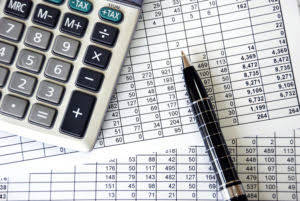- Chưa có sản phẩm trong giỏ hàng.
What’s The Difference Between Cost Accounting And Management Accounting?
20/06/2022
Content
It is calculated by dividing the cost difference by the quantity difference. Cost accounting can be seen as a self-assessment tool in the hands of management.
- Thus, it was necessary to emerge cost accounting as separate branch.
- In this case, activities are those regular actions performed inside a company.
- Moreover, it differs from the financial accounting we practice in day to day life.
- Not every type of business needs to look at environmental impact costing, but it can be highly useful in certain industries where these expenses can be significant, such as in construction.
- Analyzing the variance can be useful to help improve efficiencies, budgeting, and profits.
As the amounts of goods or services produced or sold change, fixed costs stay the same. This is because fixed costs, also referred to as overhead costs, are independent of any specific business activities. A company that agrees to rent an office for $800 a month will continue to pay that fixed cost until their lease is up. Cost accounting is the art and science of preparing statements that will help a business make important financial decisions. Such preparation of statements entails collecting, analyzing, forecasting, and distributing relevant expenses.
Cost Accounting Vs Financial Accounting
A number of costing methods and techniques are used for costing products, cost control, and managerial decisions. It is also worth noting that cost accounting collects data both in monetary and non-monetary terms. In turn, these data are compared to pre-established standards and budgets to exercise management control over the company’s operations. Cost accounting also provides information to management regarding actual results (e.g., departmental outputs, actual labor costs, and the cost of materials in process). Overheads (i.e. indirect costs) constituted a small part of total cost in the early period of the factory system as costly machinery was uncommon during those days. Necessity of cost accounting is felt more if overheads form a significant portion of total cost as we will see in t he course of our discussion in the book.
- If the standard cost of the material is much lower than the actual, management knows to investigate.
- In cost accounting, a company’s internal management compares the aforementioned costs to output results when measuring the company’s financial health and making decisions that will affect the future of the business.
- Operation Costing represents the costing in which each cost of each operation involved in an activity is ascertained separately.
- It acts as a source of information like closing inventory, capital expenditure, direct and indirect cost, etc. for the preparation of financial accounts of an organisation.
- Training accounting staff and managers on esoteric and often complex systems takes time and effort, and mistakes may be made early on.
Cost accounting has many pros, especially for larger organizations. One pro is the flexibility in choosing and tailoring a cost system to reflect their business most accurately. This leads to the biggest advantage of cost accounting, which is the ability of managers to collect, analyze, and organize financial information to help improve decision making. The most capable accounting software lets business managers set up cost categories and profit centers as they see fit. Accounting software automatically tracks expenses against budget and advanced versions flag variances. It can also calculate break-even points, gross margin and other key metrics that help managers identify potential savings, potential areas of loss, and potential areas of opportunity.
Discover the products that 31,000+ customers depend on to fuel their growth. Provide information to help eliminate inefficiencies by reorganizing production. Yvette covers business and personal finance topics and terms for The Balance.
Примеры Для Cost Accounting
Financial accounting tailors to external users, such as investors and creditors. To ensure accuracy and consistency so external decision makers can compare firms, financial accounting must follow standards. These standards are called Generally Accepted Accounting Principles . Cost accounting includes a variety of concepts and calculations that help a business to determine how well it’s controlling costs and meeting its profit goals.
This costing technique focuses on all aspects that prevent a company from succeeding or achieving its goals. This can include financial issues, but also includes non-monetary factors that limit the company. This method focuses on resolving production bottlenecks to improve productivity, whether by buying equipment or by adding more labor. Cost accounting systems vary by business, since there are no standards for how they are to be constructed. This differs from financial accounting systems, for which there are comprehensive sets of standards . Under ABC, accountants assign 100% of each employee’s time to the different activities performed inside a company .
Accounting Principles For M&a
Standard costing allocates ‘standard’ costs to products rather than the actual costs. Standard costs include elements such as labour, materials, and direct/indirect expenses during normal operations. It is a type of cost What Is Cost Accounting accounting where ratios are used to compare efficient uses of materials and labor to produce services or goods under standardized conditions. The process of assessing the difference is known as variance analysis.
For example, hairdressers must purchase scissors and hairdryers, but unless clients take them home after a haircut, they are an indirect cost. Direct costs are related to the production/acquisition of products or delivery of services. For a manufacturer, these would include the raw materials and parts that go into a final product, as well as the labor involved in its production. For some services-based businesses, such as a law firm, labor may be the only direct cost. Others, such as an auto mechanic, require inventory — car parts, for example — to perform services, so that counts as a direct cost. Cost accounting is a process of recording, analyzing and reporting all of a company’s costs related to the production of a product.
Below are four things you should know about cost accounting to help make better management decisions. Some methods include aligning employee strategies, accounting methods, measurements of performance, and management practices. Lean accounting involves using different methods to improve financial practices within a business. These methods improve the organisation and productivity of a company.
Cost Accountant Salary
The Industrial Revolution birthed many very large businesses, and with large businesses come lots of overhead, fixed costs, and complexities. Cost accounting systems did not accurately calculate products’ true costs, so these large businesses had to come up with new systems to better calculate costs to help guide decisions. For example, let’s say a bike manufacturer wants to know how many of its newest mountain bikes it needs to sell to break even. Its total fixed costs are $750,000, variable costs per unit are $500 and each bike sells for $600. To calculate the break-even point — in this case, the number of mountain bikes that must be sold — divide $750,000 by $100 ($600 – $500).
Without avoiding any expenses, if we are able to defer some expenses to future, then it is called a postponable cost. Value addition of the product may be due to some process on product or to make the product available or there may be other reasons; but it also includes the profit share on it. The cost incurred to implement a new policy in addition to regular policy is called policy cost. Profit centers are inclusive of cost centers as well as revenue activities. Profit centers set targets for cost centers and delegates responsibilities to cost centers.
Cost accounting questions often provide lots of data, but not all of that information is needed to answer the question. If you start at the top and read down, you read a lot of unneeded data. Then you can read the rest of the question — and pull out only the data you need to answer the question. Accountants use many principles to guide their decision-making process, such as the matching principle and the principle of conservatism. Besides this, cost and management accounts are utilized in the same context. Constant comparison of actual result with standard result enables to spot out areas of inefficiency.
Implementing A Cost Accounting System To Support Successful Management Accounting
In spite of this, there was slow development of cost accounting during the 19th century. To lessen the chances of any mistake or error, cost ledgers and cost control accounts, as far as possible, should be maintained on double entry principles. This will ensure the correctness of cost sheets and https://www.bookstime.com/ cost statements which are prepared for cost ascertainment and cost control. All costs incurred because of abnormal reasons should not be taken into consideration while computing the unit cost. If done so, it will distort the cost figures and mislead management resulting in wrong decisions.
By using demand and supply, activities of competitors, market condition to a great extent, also determine the price of product and cost to the producer does play an important role. To operate the business at high efficiency, it is essential for management to have a review of the production, sales, and operating results. Material, labor, and expense] is budgeted at the beginning of the period and actual expenses incurred are compared with the budget.
The accounting records of cost of one year can be compared with the records of another year. The cost accounting system provides the reliable information to compare the costs of different periods, for different volumes of output, in different departments or processes and in different establishments. It is a forward looking approach which is related to the recording, analyzing and classifying of expenditure with the objective of ascertaining the total and per unit cost of product or service. Though the latter can be used to help a business eliminate waste and shorten the time between receiving and delivering orders, improvements in production can be hard to notice from simply observing workflow.
Cost accounting has elements of traditional bookkeeping, system development, creating measurable information, and input analysis. Batch-level activities are used in activity-based costing to identify manufacturing cost-drivers. Cost accounting allowed railroad and steel companies to control costs and become more efficient. By the beginning of the 20th century, cost accounting had become a widely covered topic in the literature of business management. For example, a floral shop ramping up its floral arrangement inventory for Valentine’s Day will incur higher costs when it purchases an increased number of flowers from the local nursery or garden center. Fixed costs are costs that don’t vary depending on the level of production. These are usually things like the mortgage or lease payment on a building or a piece of equipment that is depreciated at a fixed monthly rate.
Activity-based management includes the use of activity-based costing to manage a business. In the early nineteenth century, these costs were of little importance to most businesses. Managers must understand fixed costs in order to make decisions about products and pricing.
Value streams, or profit drivers, add to the company’s bottom line and greatly impacts financial decision-making. Cost accounting makes a provision for the analysis and classification of expenditure. It then enables the management to ascertain the total, as well as the per-unit cost, of a particular unit of production. Cost accounting systems aim to work out the cost of producing goods and services soon on completion and not long after production.
Environmental Accounting
Cost accounting is the process of accounting from the point at which expenditure is incurred or committed to the establishment of its ultimate relationship with cost centers and cost units. This classification is of no use in determining the cost unit-wise, job-wise, process-wise, batch-wise. Identifying All Your Costs – This principle helps cost accountants create a budget for their project, product, or activity. By creating a budget, money and resources can be effectively spent and allocated.
Avoiding Pitfalls On Cost Accounting Exams
Provide information to both internal & external users.Provide information to internal users.ImportanceTo be competitive in a global economy, companies must optimize material, labor and overhead costs. Cost accounting helps in ascertaining the costing profit or loss of each product, process, job, operation or service rendered on an objective basis by matching cost with the revenue of the activity. It also allows companies to maintainjust-in-time inventory systemswhere materials are only ordered from vendors and supplies on an as needed basis. No extra quantities are ordered and stored for processing at later point.





